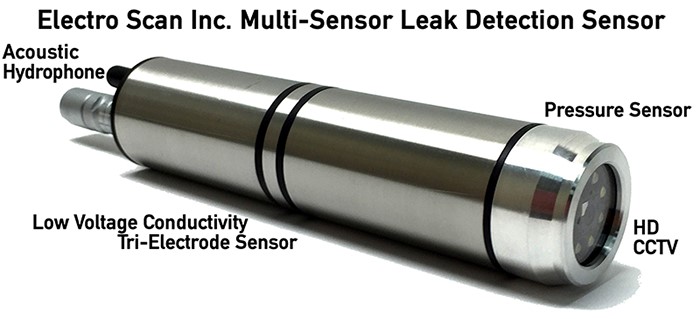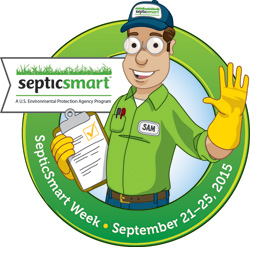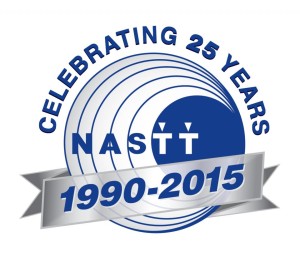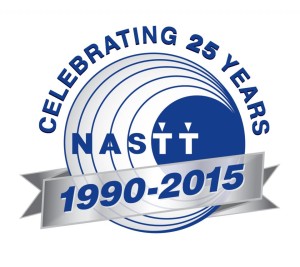Uncategorized
Cleveland, Ohio – The Northeast Trenchless Association Inc. (NTA) and the North American  Society for Trenchless Technology (NASTT) will join together effective January 1, 2016 to form the NASTT Northeast Chapter. This chapter will cover Connecticut, Maine, Massachusetts, New Hampshire, New York, Rhode Island and Vermont. The goals of the consolidated organization will continue to advance trenchless technology and promote its benefits for the public and the natural environment by increasing awareness and knowledge through technical information dissemination, research and development, education and training.
Society for Trenchless Technology (NASTT) will join together effective January 1, 2016 to form the NASTT Northeast Chapter. This chapter will cover Connecticut, Maine, Massachusetts, New Hampshire, New York, Rhode Island and Vermont. The goals of the consolidated organization will continue to advance trenchless technology and promote its benefits for the public and the natural environment by increasing awareness and knowledge through technical information dissemination, research and development, education and training.
Matt Timberlake, NTA past president, commented: “The Northeast sits on top of some of the oldest buried infrastructure in North America. By pulling together the regional strength of the NTA and its members with the national resources of NASTT, the new Northeast Chapter of NASTT will help serve the diverse utilities market in the northeast and continue to help grow trenchless rehabilitation and construction in the region.”
An industry launch event will be held on Thursday, November 12, 2015, from 5:00 p.m. to 9:00 p.m. in Springfield, Massachusetts. Members of the NTA and NASTT, as well as the Northeast Chapter Steering Committee, will outline the goals of the new association including a call for nomination of officers. The event is open to all industry stakeholders including municipal utility owners and operators, consulting engineers, contractors, suppliers and students. There is no charge to attend the event which will include a social hour and dinner. Click here to register for the event.
The Northeast Chapter of the NASTT Steering Committee is composed of of Scott Kelly, ETTI (2004 NTA President); George Ragula, PSG&E (NASTT Past Chair 2011-2012); Matt Timberlake, Ted Berry Company (NTA Past President); Justin DeMello, Woodard and Curran (NASTT Member); and Matt Boeh, UGSI (2015 NTA President).
Uncategorized
New Patent Pending Multi-Sensor Probe Represents First Device to Accurately Find and Measure Water Losses
SACRAMENTO, Calif. — Electro Scan Inc., a global leader in pipe condition assessment announced its new patent pending multi-sensor probe that accurately finds and measures water losses.
The Company’s game changing leak detection technology is featured as part of a 90-day / 16-city international roadshow that began this week.
Water utilities commonly lose 20-30% of their production before delivery to a customer’s meter, with fixing the wrong pipe often costing 10 times more than fixing the right pipe.
 Since legacy equipment, like acoustic sensors, data loggers, electro-magnetic sensors, and visual inspections are not able to reliably find water leaks, next generation technologies have been needed to accurately assess water mains and certify their repair.
Since legacy equipment, like acoustic sensors, data loggers, electro-magnetic sensors, and visual inspections are not able to reliably find water leaks, next generation technologies have been needed to accurately assess water mains and certify their repair.
“We are delighted to unveil our new technology,” said Chuck Hansen, Chairman, Electro Scan Inc. and former Chairman, Hansen Information Technologies, sold to Infor Global in 2007.
Explains Hansen, “By combining the latest technologies into our 4-in-1 Multi-Sensor Probe, offered as an exclusive service, utilities can quantify each leak’s size, location, and estimated GPM [LPS], in minutes.”
Electro Scan’s technology assesses both pressurized and gravity water mains while pipes remain in service.
The Company’s patent pending multi-sensor probe, includes:
1. Low Voltage Conductivity Sensor– Measures individual leaks and total defect flows utilizing a low voltage conductivity tri-electrode array to find leaking cracks, pinholes, defective joints, bad service connections, and other openings to ground.
2. High Definition Camera– Assists operators in navigating through water mains and documents leak locations found by low voltage conductivity sensor using a standard 1920×1080 high definition camera recording at 30 frames per second (fps).
3. Pressure Sensor– Provides location-specific water pressure to assist in calculating defect flow rates.
4. Acoustic Sensor– Records sound vibrations and provides benchmark of legacy results that can be readily compared to low voltage conductivity results.
“The Electro Scan 4-in-1 water probe was designed to find leaks not previously found by legacy methods,” states Mark Grabowski, General Manager, Electro Scan. “If a pipe leaks electricity, it leaks water. Now we can provide a reliable, repeatable, and measurable solution for the water industry, based on our proven technology already being deployed in the wastewater collection industry.”
Pipe materials best suited for low voltage conductivity surveys, include: Asbestos Cement, Cement-Mortar Lined and Coated Steel Pipe, Cured In-Place Pipe, Fiberglass Reinforced Pipe, High-Density Polyethylene Pipe, Prestressed Concrete Cylinder Pipe, Polyethylene Pipe, Polyvinyl Chloride, and Reinforced Concrete Pipe.
Using a neutrally buoyant fiber optic cable, the Company can evaluate up to 2,000ft (610m) of water main from a single point of entry, accessed through fire hydrants, air valves, flow meters, gate valves, and pressure fittings.
“In the past, acoustic sensors may have suggested locations of general anomalies,” said Carissa Boudwin, Director of Marketing, Electro Scan.
Continues Boudwin, “But, false-positive readings, poor data repeatability, reliance on third party data interpretation, ambient noise from road traffic, water table heights, pipe diameter, and the inability to assess PVC, PE, and HDPE pipes, has limited its usefulness to find non-revenue water losses and optimize CAPEX plans.”
Electro Scan’s 16-city roadshow, includes:
Sept 9-10 IKT Praxistage „Neubau, Sanierung und Reparatur“Gelsenkirchen, Germany
Sept 13-15 SAP for Utilities, North American Conference, Huntington Beach, CA
Sept 14 Water JAM, Virginia Beach, VA
Sept 22-23 Water Innovation Summit, Berkeley, CA
Sept 23-25 Iowa League of Cities, Cedar Rapids, IA
Sept 26-30 WEFTEC, McCormick Place, Booth #2804, Chicago, IL
Oct 11-14 AMWA Executive Management Conference, Savannah, GA
Oct 13-16 AWWA Water Infrastructure Conference, Bethesda, MD
Oct 20 UKSTT Road Show, Bristol, UK
Oct 22 Rocky Mountain Water Environment Association, Vail, CO
Oct 26-29 AWWA Calif-Nevada Annual Conference, Las Vegas, NV
Nov 6 American Leak Detection Annual Meeting, Chicago, IL
Nov 11-13 California Water Association, Monterey, CA
Nov 17-19 Trenchless Technology Roadshow, Richmond, BC
Dec 4 Hawaii Water Environment Association, Honolulu, HI
Dec 8-9 North American Water Loss Conference, Atlanta, GA
Electro Scan has been named Best CleanTech Company (The New Economy), Best Innovative Technology (Water Environment Federation), Innovative Product Award (North American Society for Trenchless Technology) and Best Project (UK Society of Trenchless Technology).
While equipment is not available for purchase, the new technology is available as a professional service offered directly by the Company.
About Electro Scan
The privately-held Company designs advanced instrumentation, mobile, and cloud computing applications that automatically locates, measures, and reports defects in water, sewer, and gas pipelines.
Contacts
Uncategorized
(Lenexa, Kan., Sept. 21, 2015) – EPA has designated Sept. 21-25, 2015, as SepticSmart  Week. In recognition of this event, EPA and its state, local and industry partners are working around the country to help raise awareness about the need for proper care and maintenance of septic systems and to encourage homeowners to do their part.
Week. In recognition of this event, EPA and its state, local and industry partners are working around the country to help raise awareness about the need for proper care and maintenance of septic systems and to encourage homeowners to do their part.
By taking small steps to care for and maintain their septic systems, homeowners will not only be helping to protect public health and the environment, they can also save money and protect property values.
Approximately 20 percent of American households and 33 percent of new construction (both domestic and commercial) are served by septic wastewater systems or other types of onsite wastewater systems. Today’s septic systems and onsite wastewater systems feature advanced technologies enabling them to achieve the same level of wastewater treatment provided by the traditional sewer systems.
Septic systems can be designed as “cluster systems,” enabling them to treat large volumes of wastewater from multiple homes, apartment complexes, or businesses. Because treated effluent from septic systems is reused and recharges the local underground aquifer, they are regarded as “Green Infrastructure.”
As the nation’s population continues to grow and cash-strapped rural and small communities look for viable, low-cost and effective methods of wastewater treatment, septic systems will continue to play a critical role in our nation’s wastewater infrastructure.
For septic systems to effectively treat wastewater to levels that provide adequate protection to public health and valuable water resources, proper system care and maintenance is vital. When homeowners “flush and forget” about their septic systems, it can lead to system back-ups and overflows, which can result in costly repairs, pollution of local waterways, and added risks to public health and the environment.
State and local governments, industry professionals, environmental groups and others are urged to use a free online toolkit of EPA resources to promote the proper care and maintenance of septic systems.





